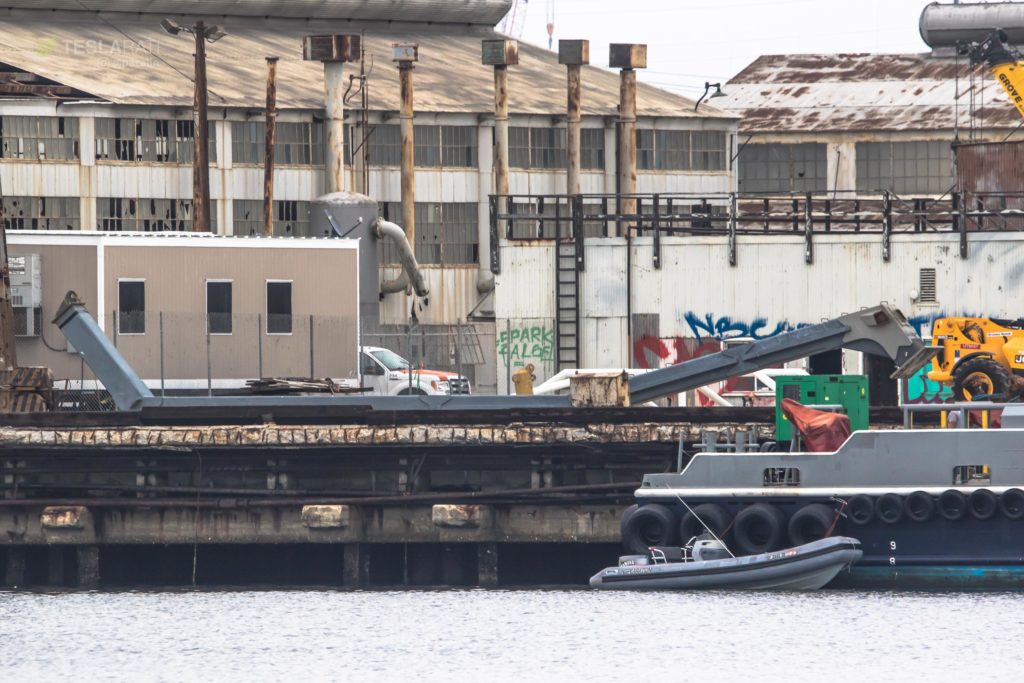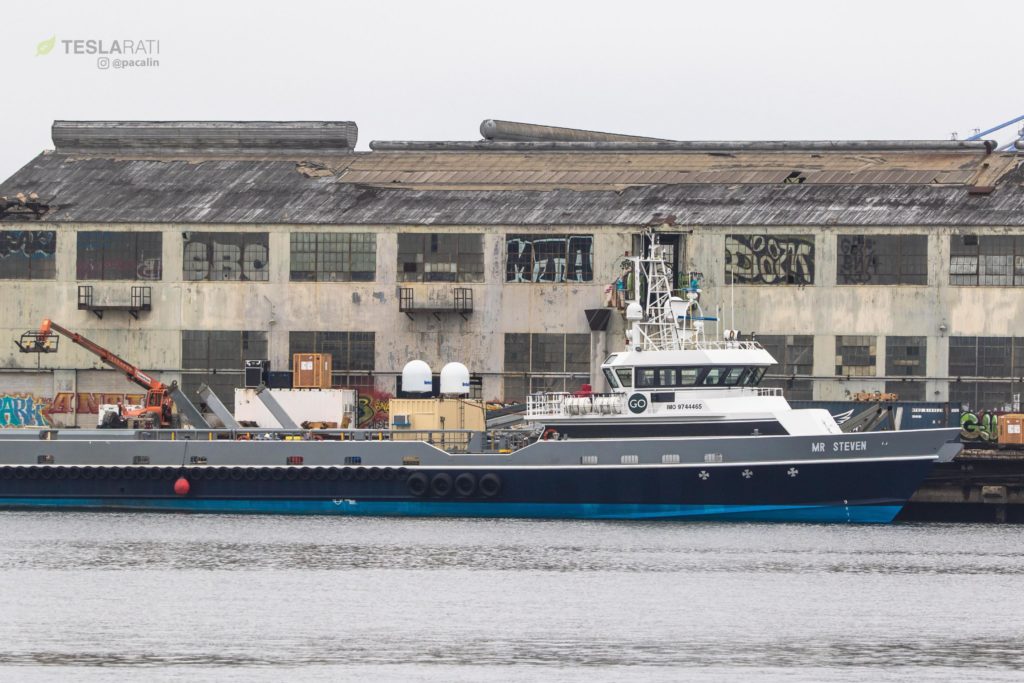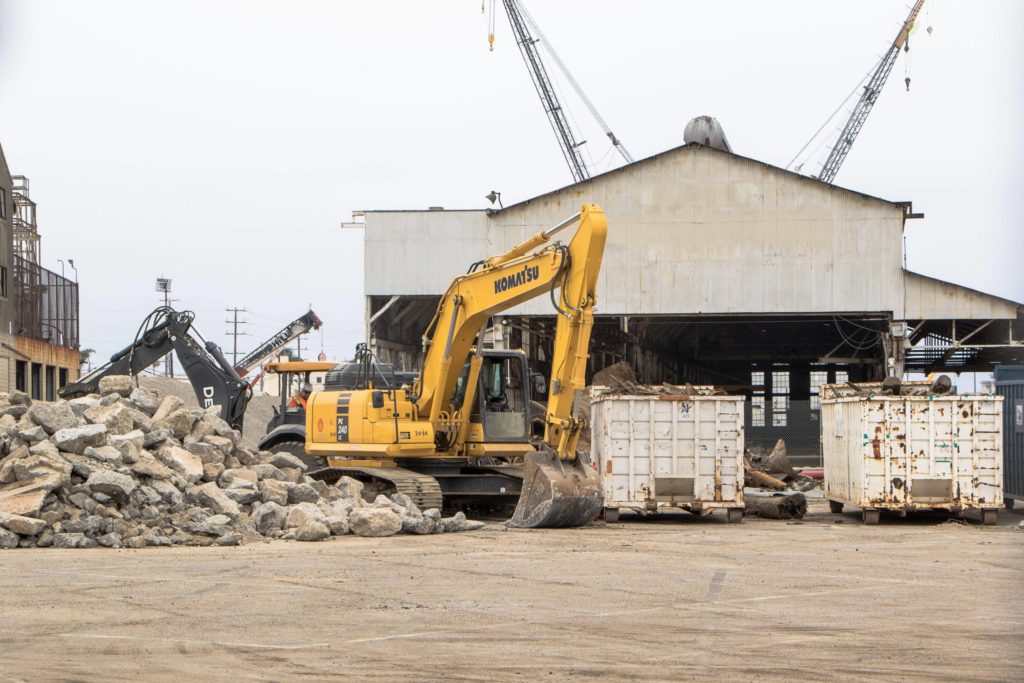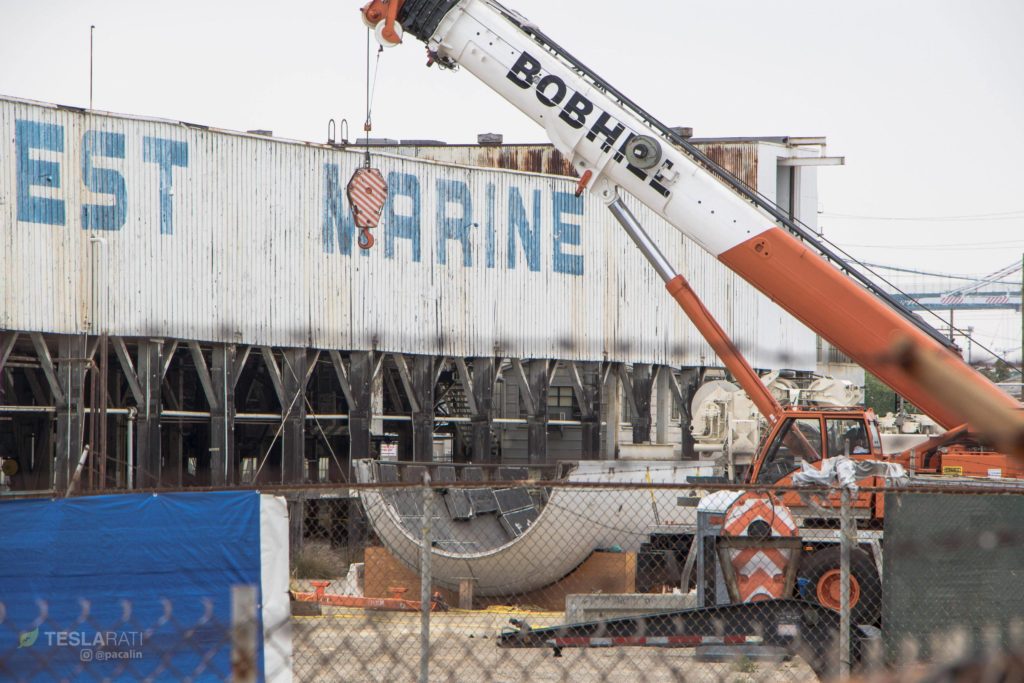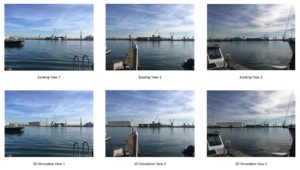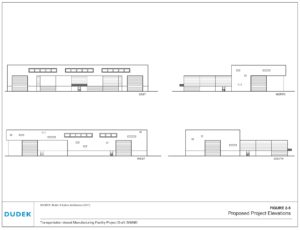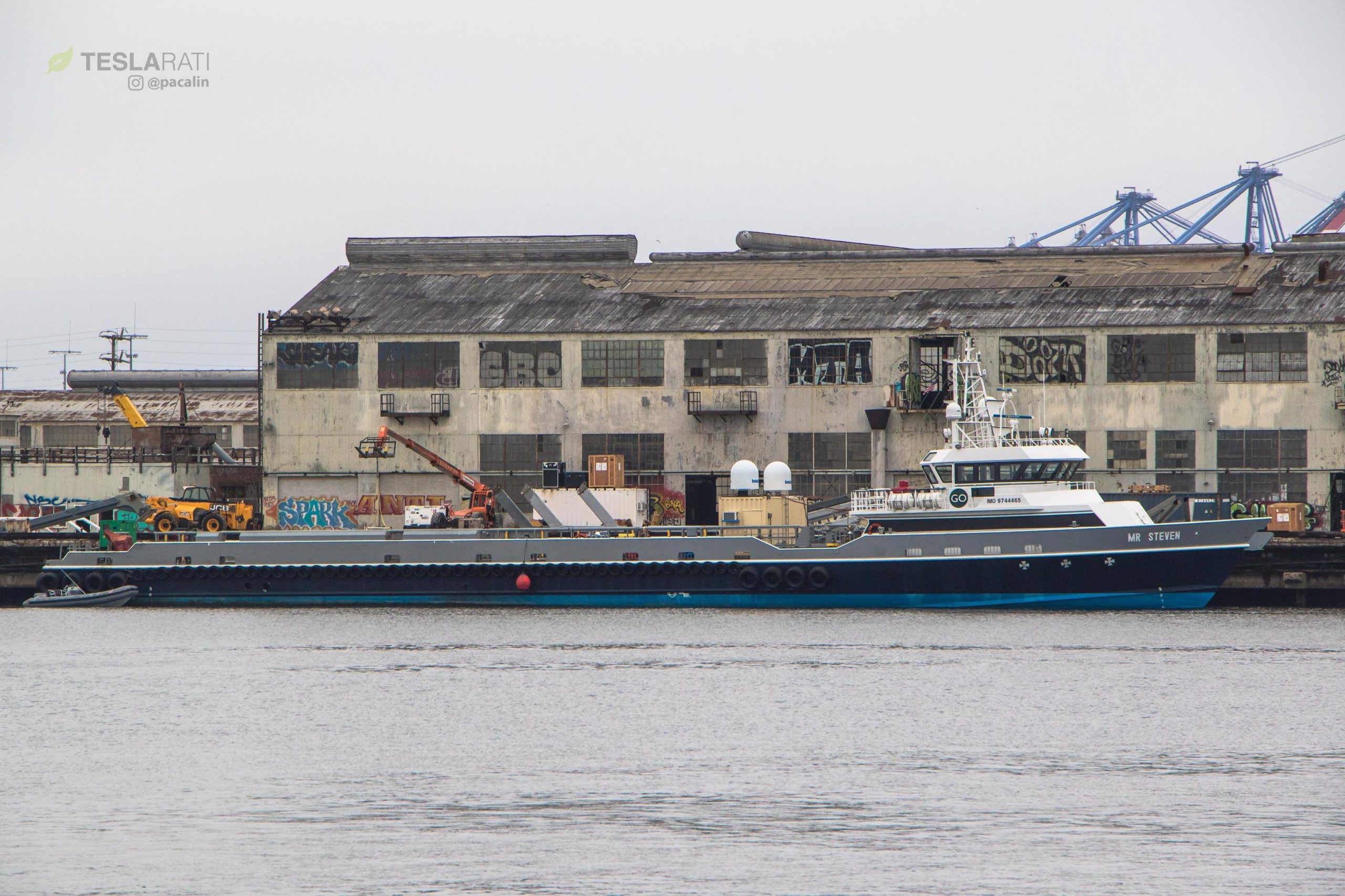
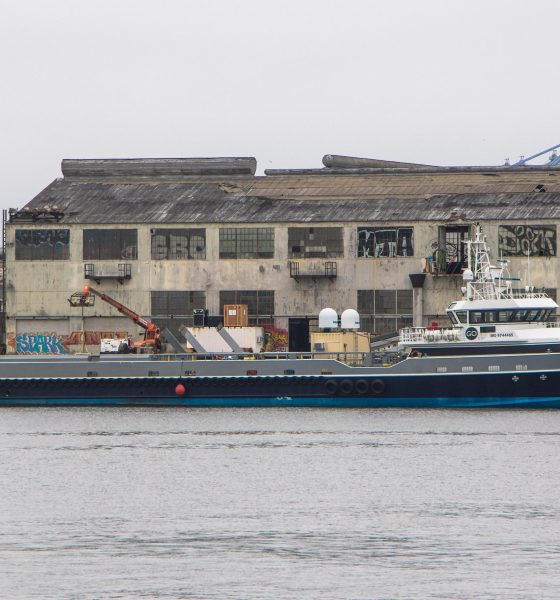
SpaceX
SpaceX’s Mr Steven preps for “claw” upgrade for football field-sized net
Photos from Teslarati photographer Pauline Acalin show that SpaceX’s Mr. Steven fairing recovery vessel is undergoing extensive upgrades to the arms that secure the catch net, likely in support of what CEO Elon Musk described as a factor-of-four extension of the net’s catching area.
In order to accomplish that fourfold increase in usable area, SpaceX will have to effectively double the reach of Mr Steven’s four ‘limbs’, a significant change that explains why the vessel appears to have had all four arms amputated. Intriguingly, the vessel’s upgrades are taking place at SpaceX’s recently-leased Berth 240, the company’s preferred location for berthing its fleet of rocket recovery vessels, conducting Falcon 9 booster recovery ops, and -eventually – the first Mars rocket factory in 2019.
As of now, it’s unclear what approach SpaceX will take for upgrading Mr Steven’s arms – with only one detached example visible at Berth 240, it appears that the company will either add on to the hardware already built for the boat or start from scratch in order to optimally extend their reach. A new net, of course, will also be needed to span the fourfold increase in area – in other words, up to roughly 6000 square meters, 65,000 square feet, or 1.5 acres. I have little doubt that SpaceX will be able to reliably catch Falcon 9 payload fairings with a net as large or larger than American and European football fields (~1.3 acres vs. ~1.7 acres).

An artist rendering of a Falcon 9 fairing parasailing towards Mr Steven’s net. Original photos by Chuck Bennett (Instagram @chuckbennett) and SpaceX. (Chuck Bennet/SpaceX/Eric Ralph)
SpaceX’s has roughly four weeks until their next West coast launch and thus another opportunity to attempt to catch a Falcon 9 payload fairing. That mission is currently scheduled for early July 20th from Space Launch Complex 4E (SLC-4E) in Vandenberg Air Force Base. Teslarati’s West coast photographer will continue to check up on Mr Steven to judge whether the vessel will be ready in time for launch.
- One of Mr Steven’s four amputated arms, removed in preparation for upgrades. (Pauline Acalin)
- A sad Mr Steven sits beside Berth 240, sans arms. (Pauline Acalin)
- Berth 240 demolition begins! (Pauline Acalin)
- A Falcon 9 fairing overlooks SpaceX’s Berth 240 construction progress, June 20th. (Pauline Acalin)
BFR factory construction
Meanwhile, serious demolition has begun at Berth 240, likely preparing a number of basic necessities before any major building begins. A giant pile of broken concrete lays witness to that process, likely involving the appraisal, repair, and replacement of utilities and pipe systems currently buried under the facility. Forlorn Falcon 9 payload fairings – pulled intact out of the Pacific Ocean – can be seen stoically looking on while construction crews begin the first steps of a process that will, at least eventually, culminate in the completion of a factory for the rocket that will obsolete Falcon 9, Falcon Heavy, and their fairings.
Based on land use approvals published in March 2018, the construction will be cut into two phases, with phase one focusing on a smaller, intermediary building capable of support limited Falcon recovery work and potentially initial BFR prototype construction, allowing that process to be moved from the temporary tent it currently is housed in. Phase 2 would see a larger build constructed around the preceding facility, necessitating the demolition of one of Berth 240’s historic buildings. Per the filings, Phase 1 is expected to be finished within 16-18 months of approval, placing its completion sometime in mid to late 2019.
- Note the fencing around the actual foundation site for SpaceX’s proposed BFR factory. (Pauline Acalin)
- Renders of the proposed BFR factory at Berth 240. (SpaceX)
- Blueprints of the proposed BFR factory at Berth 240. (SpaceX)

Elon Musk
SpaceX maintains unbelievable Starship target despite Booster 18 incident
It appears that it will take more than an anomaly to stop SpaceX’s march towards Starship V3’s refinement.
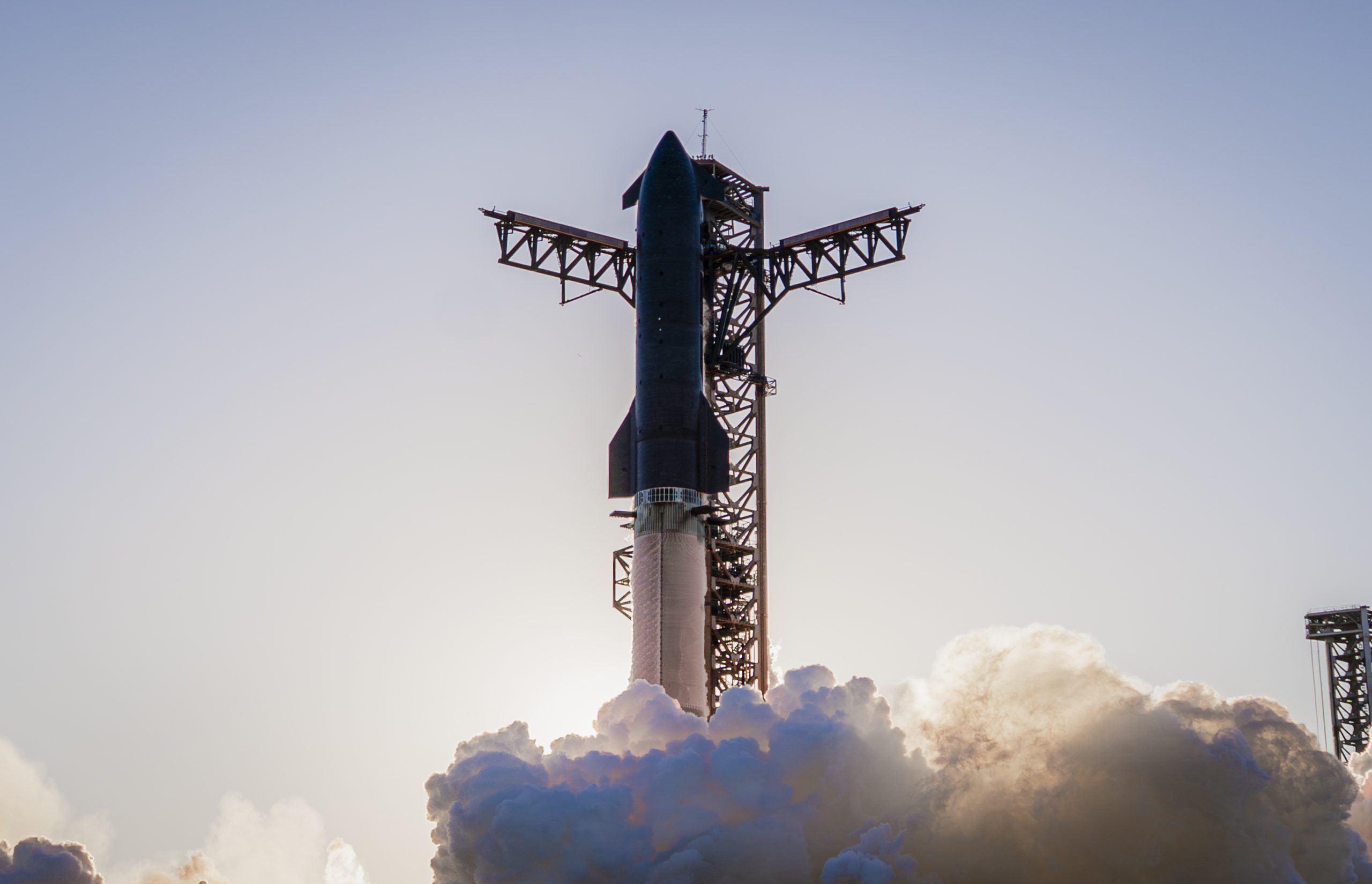
SpaceX recently shared an incredibly ambitious and bold update about Starship V3’s 12th test flight.
Despite the anomaly that damaged Booster 18, SpaceX maintained that it was still following its plans for the upgraded spacecraft and booster for the coming months. Needless to say, it appears that it will take more than an anomaly to stop SpaceX’s march towards Starship V3’s refinement.
Starship V3 is still on a rapid development path
SpaceX’s update was posted through the private space company’s official account on social media platform X. As per the company, “the Starbase team plans to have the next Super Heavy booster stacked in December, which puts it on pace with the test schedule planned for the first Starship V3 vehicle and associated ground systems.”
SpaceX then announced that Starship V3’s maiden flight is still expected to happen early next year. “Starship’s twelfth flight test remains targeted for the first quarter of 2026,” the company wrote in its post on X.
Elon Musk mentioned a similar timeline on X earlier this year. In the lead up to Starshp Flight 11, which proved flawless, Musk stated that “Starship V3 is a massive upgrade from the current V2 and should be through production and testing by end of year, with heavy flight activity next year.” Musk has also mentioned that Starship V3 should be good enough to use for initial Mars missions.
Booster 18 failure not slowing Starship V3’s schedule
SpaceX’s bold update came after Booster 18 experienced a major anomaly during gas system pressure testing at SpaceX’s Massey facility in Starbase, Texas. SpaceX confirmed in a post on X that no propellant was loaded, no engines were installed, and personnel were positioned at a safe distance when the booster’s lower section crumpled, resulting in no injuries.
Still, livestream footage showed significant damage around the liquid oxygen tank area of Booster 18, leading observers to speculate that the booster was a total loss. Booster 18 was among the earliest vehicles in the Starship V3 series, making the failure notable. Despite the setback, Starship V3’s development plans appear unchanged, with SpaceX pushing ahead of its Q1 2026 test flight target.
Elon Musk
SpaceX issues statement on Starship V3 Booster 18 anomaly
The incident unfolded during gas-system pressure testing at the company’s Massey facility in Starbase, Texas.

SpaceX has issued an initial statement about Starship Booster 18’s anomaly early Friday. The incident unfolded during gas-system pressure testing at the company’s Massey facility in Starbase, Texas.
SpaceX’s initial comment
As per SpaceX in a post on its official account on social media platform X, Booster 18 was undergoing gas system pressure tests when the anomaly happened. Despite the nature of the incident, the company emphasized that no propellant was loaded, no engines were installed, and personnel were kept at a safe distance from the booster, resulting in zero injuries.
“Booster 18 suffered an anomaly during gas system pressure testing that we were conducting in advance of structural proof testing. No propellant was on the vehicle, and engines were not yet installed. The teams need time to investigate before we are confident of the cause. No one was injured as we maintain a safe distance for personnel during this type of testing. The site remains clear and we are working plans to safely reenter the site,” SpaceX wrote in its post on X.
Incident and aftermath
Livestream footage from LabPadre showed Booster 18’s lower half crumpling around the liquid oxygen tank area at approximately 4:04 a.m. CT. Subsequent images posted by on-site observers revealed extensive deformation across the booster’s lower structure. Needless to say, spaceflight observers have noted that Booster 18 would likely be a complete loss due to its anomaly.
Booster 18 had rolled out only a day earlier and was one of the first vehicles in the Starship V3 program. The V3 series incorporates structural reinforcements and reliability upgrades intended to prepare Starship for rapid-reuse testing and eventual tower-catch operations. Elon Musk has been optimistic about Starship V3, previously noting on X that the spacecraft might be able to complete initial missions to Mars.
Elon Musk
SpaceX Starship Version 3 booster crumples in early testing
Photos of the incident’s aftermath suggest that Booster 18 will likely be retired.

SpaceX’s new Starship first-stage booster, Booster 18, suffered major damage early Friday during its first round of testing in Starbase, Texas, just one day after rolling out of the factory.
Based on videos of the incident, the lower section of the rocket booster appeared to crumple during a pressurization test. Photos of the incident’s aftermath suggest that Booster 18 will likely be retired.
Booster test failure
SpaceX began structural and propellant-system verification tests on Booster 18 Thursday night at the Massey’s Test Site, only a few miles from Starbase’s production facilities, as noted in an Ars Technica report. At 4:04 a.m. CT on Friday, a livestream from LabPadre Space captured the booster’s lower half experiencing a sudden destructive event around its liquid oxygen tank section. Post-incident images, shared on X by @StarshipGazer, showed notable deformation in the booster’s lower structure.
Neither SpaceX nor Elon Musk had commented as of Friday morning, but the vehicle’s condition suggests it is likely a complete loss. This is quite unfortunate, as Booster 18 is already part of the Starship V3 program, which includes design fixes and upgrades intended to improve reliability. While SpaceX maintains a rather rapid Starship production line in Starbase, Booster 18 was generally expected to validate the improvements implemented in the V3 program.
Tight deadlines
SpaceX needs Starship boosters and upper stages to begin demonstrating rapid reuse, tower catches, and early operational Starlink missions over the next two years. More critically, NASA’s Artemis program depends on an on-orbit refueling test in the second half of 2026, a requirement for the vehicle’s expected crewed lunar landing around 2028.
While SpaceX is known for diagnosing failures quickly and returning to testing at unmatched speed, losing the newest-generation booster at the very start of its campaign highlights the immense challenge involved in scaling Starship into a reliable, high-cadence launch system. SpaceX, however, is known for getting things done quickly, so it would not be a surprise if the company manages to figure out what happened to Booster 18 in the near future.
